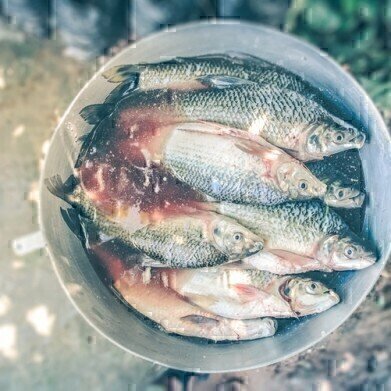Bioanalytical
What's the Best Way to Cook Your Fish? — Chromatography Explores
Jul 19 2017
Baked, fried, Boil-in-the-bag or steamed. There are many ways to enjoy fish. If taste is the criterion, then the best way to cook fish probably depends on the type of fish and who is doing the cooking.
But what if about safety? To reduce the amount of toxins in the flesh of the fish before we eat it is surely as important as taste — could this be affected by the cooking method?
Tilapia — available in your chippy?
A recent paper in the journal Food Control suggests that the method of cooking fish does affect the levels of toxins in the flesh. The researchers — from the University of Seville in Spain — studied the effects of cooking Nile tilapia by boiling and steaming.
Although the Nile tilapia might not be on the menu at your local chippy, it is common in many other countries — being the fourth most consumed fish in the US in recent years. A freshwater fish, Nile tilapia are even found in the hieroglyphs of Ancient Egypt. Nowadays, tilapia are extensively farmed in many parts of the world. But tilapia are also one of the fish most susceptible to off-flavours and a musty taste — which are often associated with cyanotoxins.
Cyanobacteria with your chips?
The study analysed the concentration of a cyanotoxin called cylindrospermopsin that is produced by freshwater cyanobacteria. The toxin is known to cause illness in humans following an outbreak of sickness in Australia in 1979 — although thankfully everyone recovered.
The European Food Safety Authority has recently published a report highlighting the lack of scientific studies into the transference and bioaccumulation of cyanotoxins in food stuffs. As one of the study’s main authors states: ‘They are emerging toxins, which currently need to be tested to evaluate the risks that their presence in water and food might cause for humans and for the environment’.
Chromatography and chips
The team were interested in finding out what happened to the toxins in the fish when they were cooked. They used liquid chromatography and mass spectrometry to analyse the concentration of cyanotoxin before and after cooking — and in the water after cooking. Chromatography is a common technique for food safety issues as discussed in the article, How Safe is Safe? Analytical Tools for Tracing Contaminants in Food.
The team found that steaming the fish reduced the cyanotoxin by 26%, whilst boiling only reduced the toxin by 18%. They also found that the toxin passed into the cooking water — so watch out for that fish-stock.
As they state in a press release: ‘Our results show that it is not recommendable to eat raw freshwater fish, that it should be cooked, and better steamed than boiled, for more than two minutes and that the water used for cooking should not be used for stocks, as it contains water-soluble toxins, which are transferred from the fish to the water.’
Events
Jan 20 2025 Amsterdam, Netherlands
Feb 03 2025 Dubai, UAE
Feb 05 2025 Guangzhou, China
Mar 01 2025 Boston, MA, USA
Mar 04 2025 Berlin, Germany














